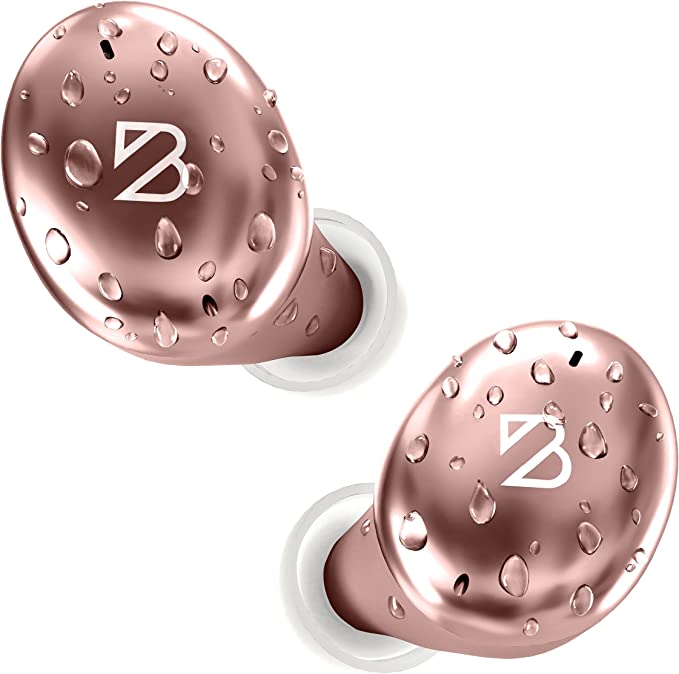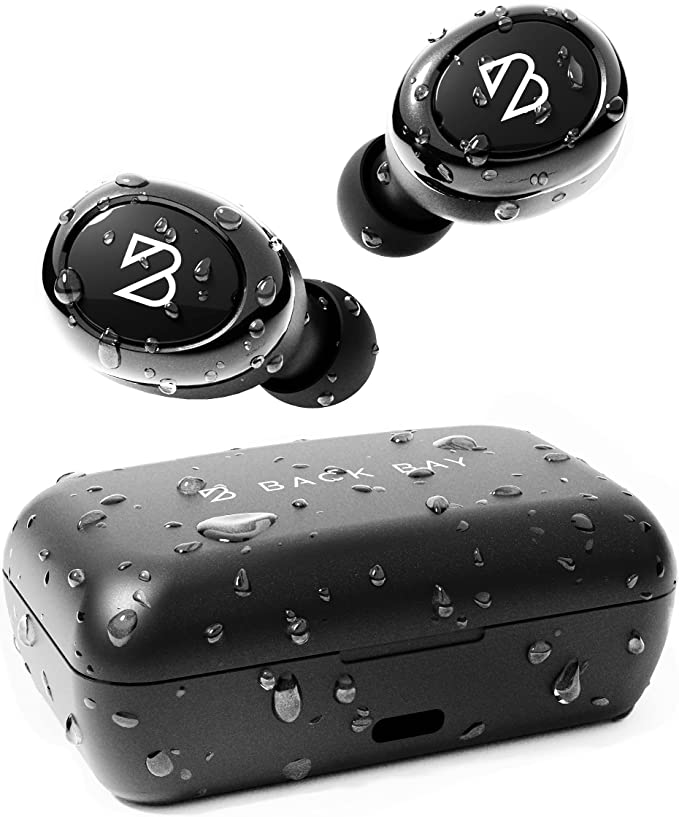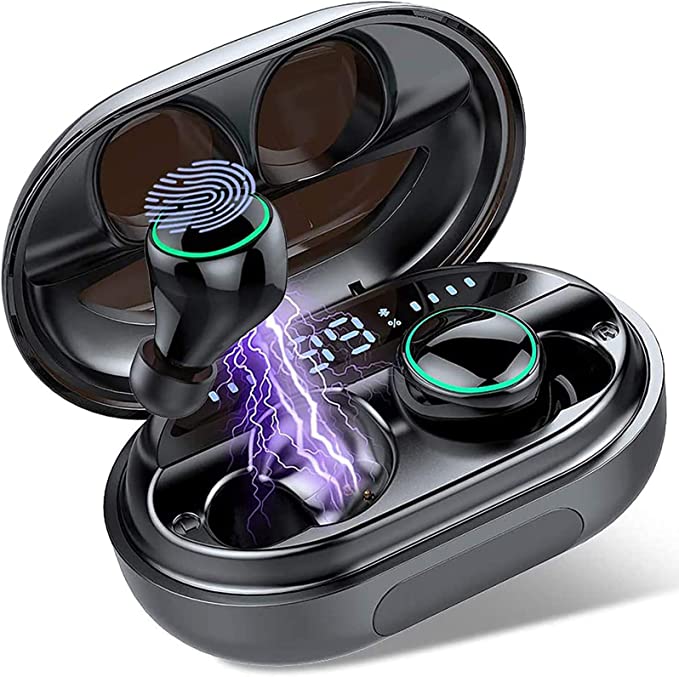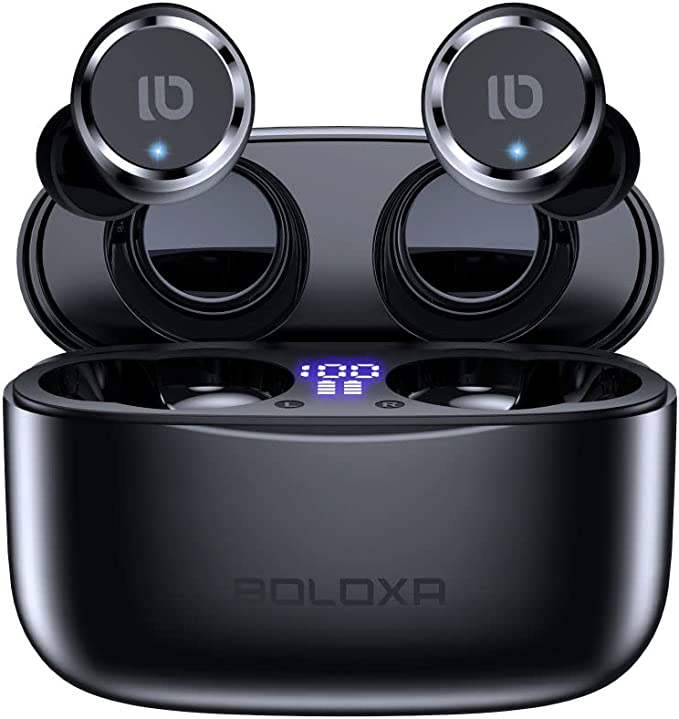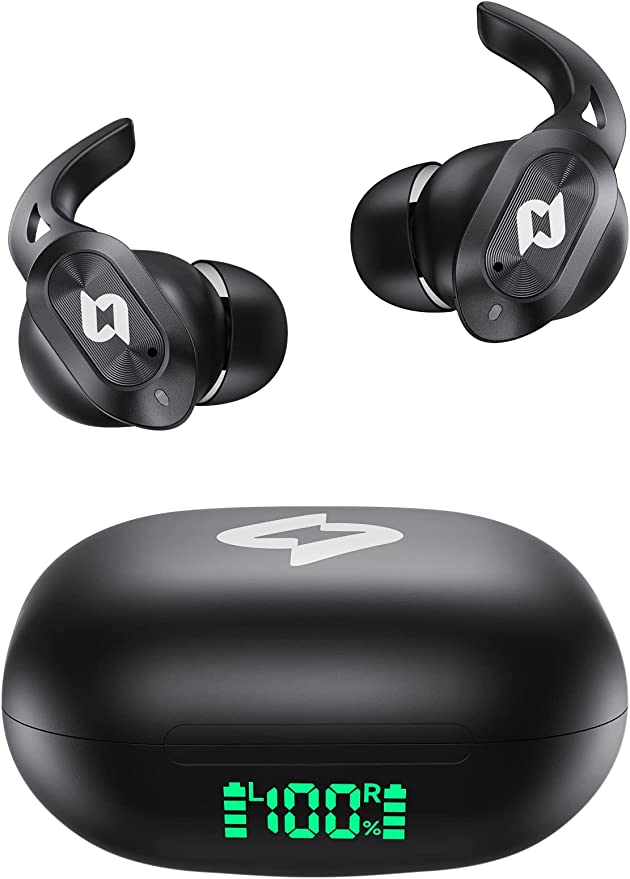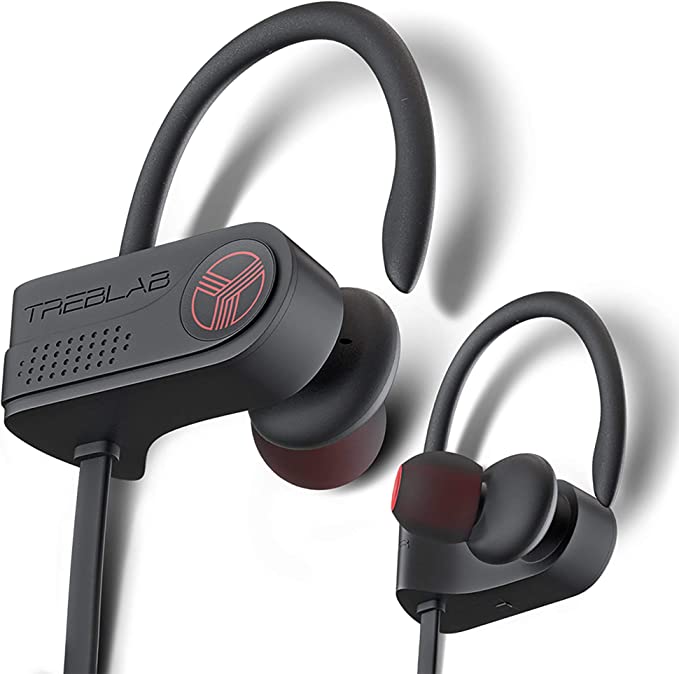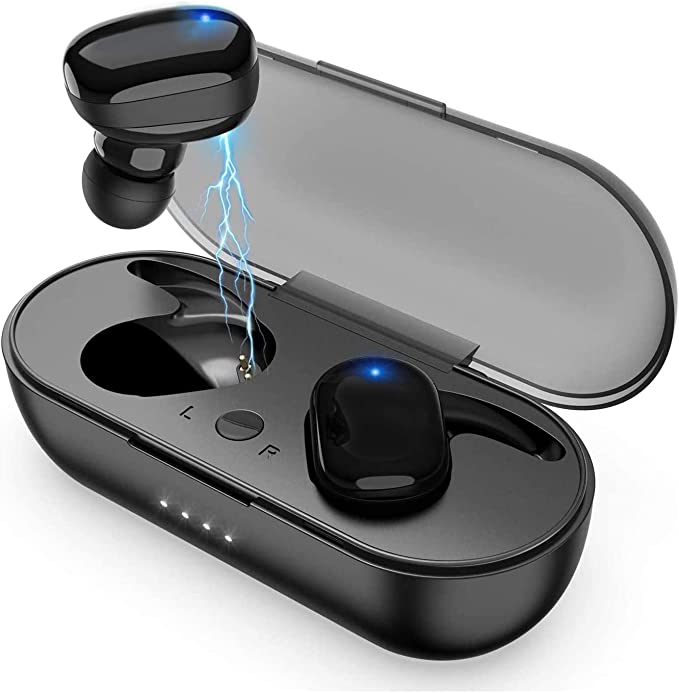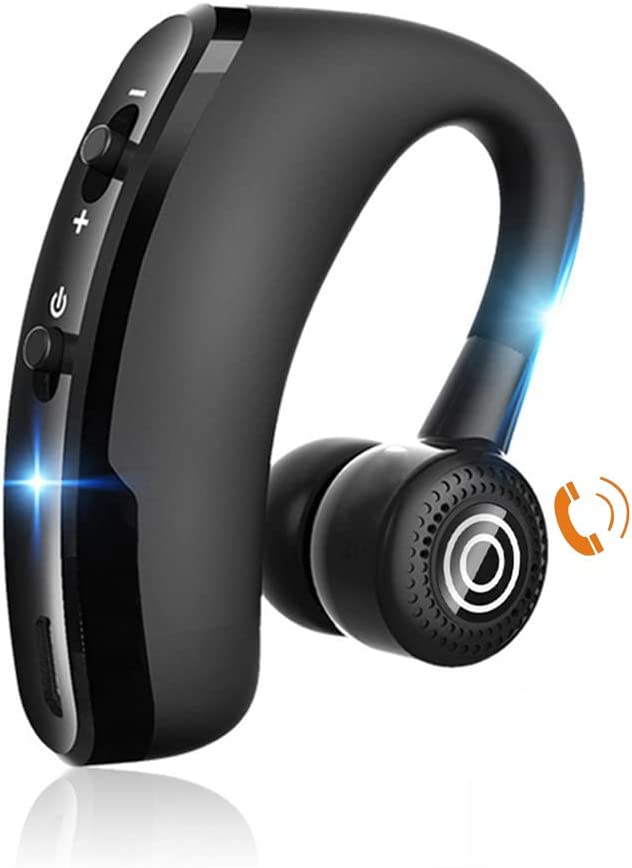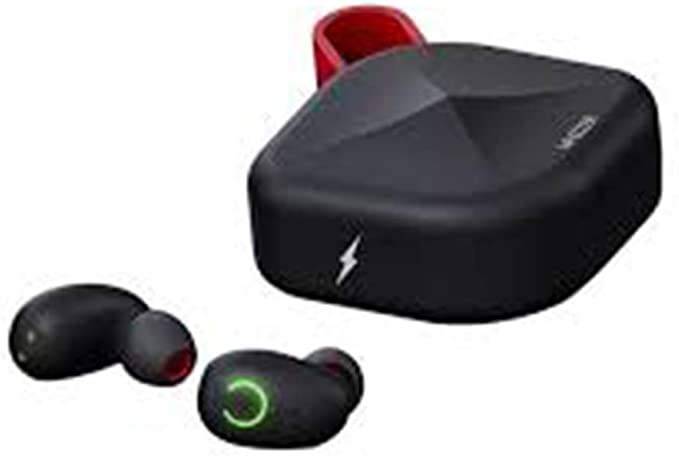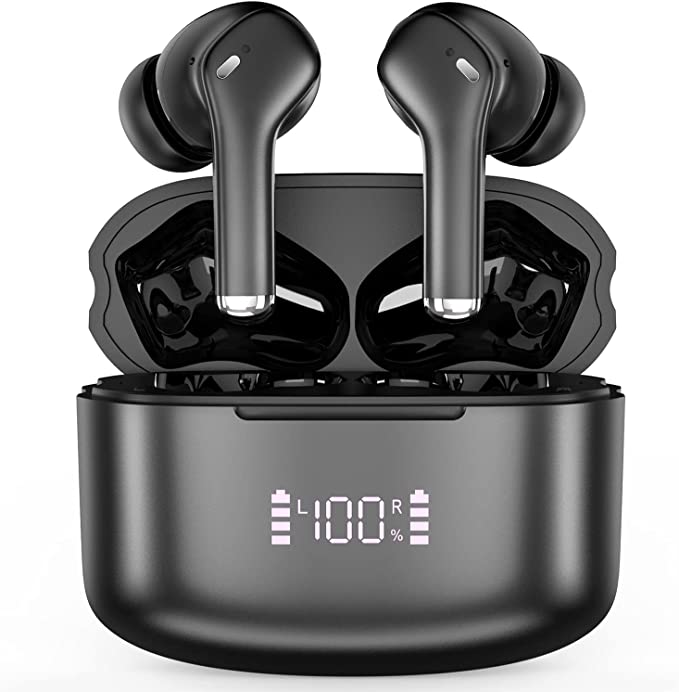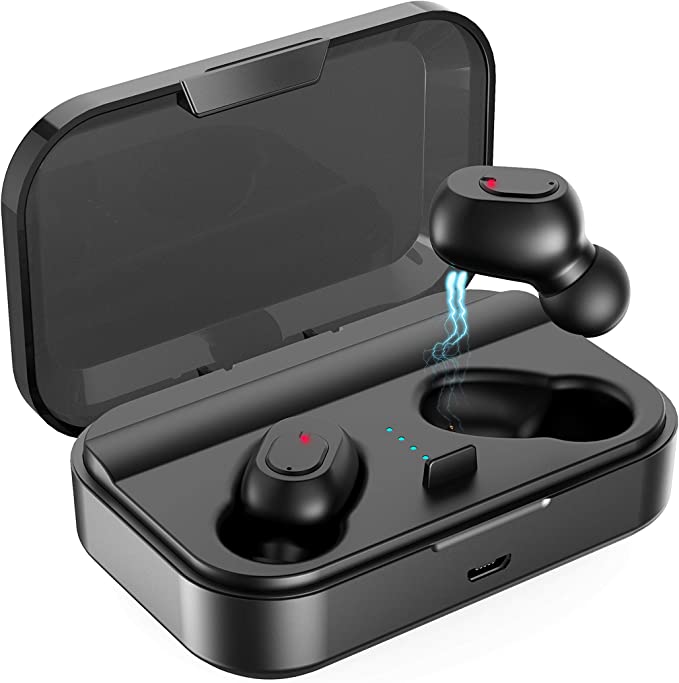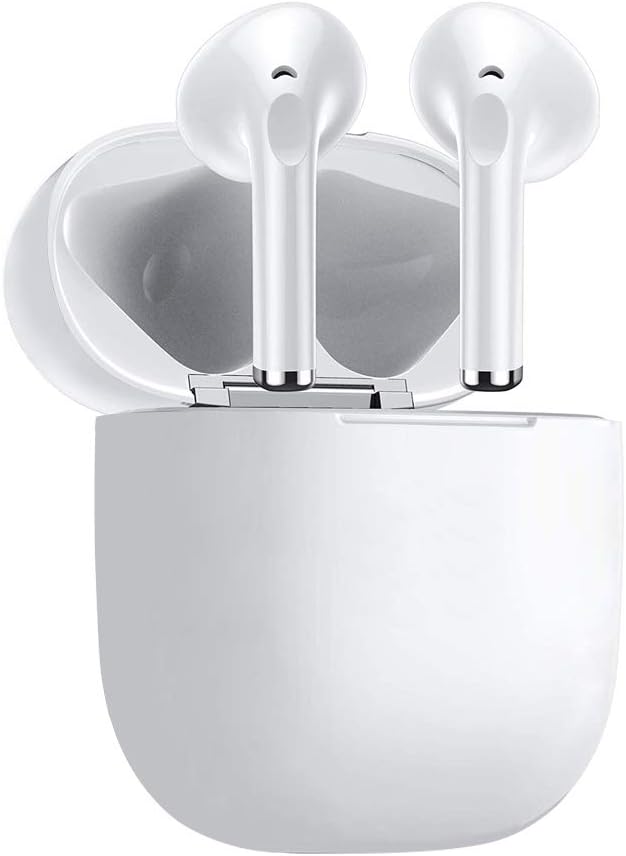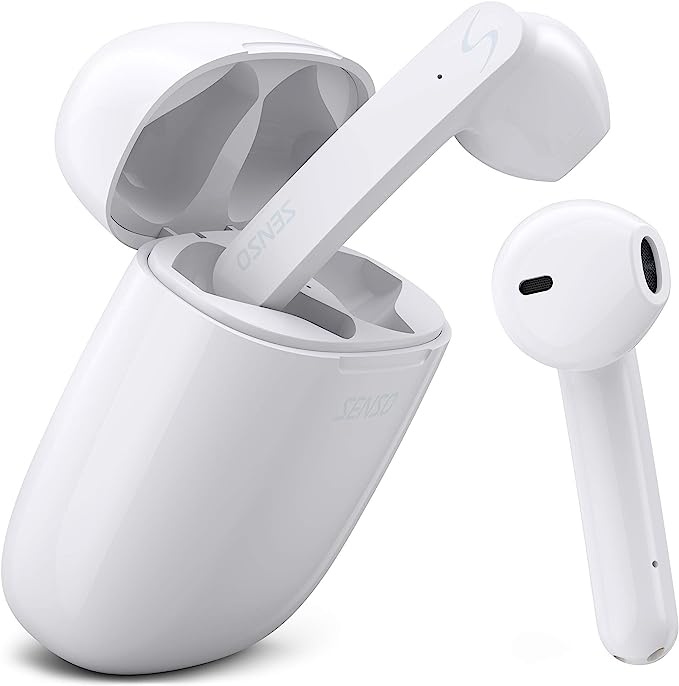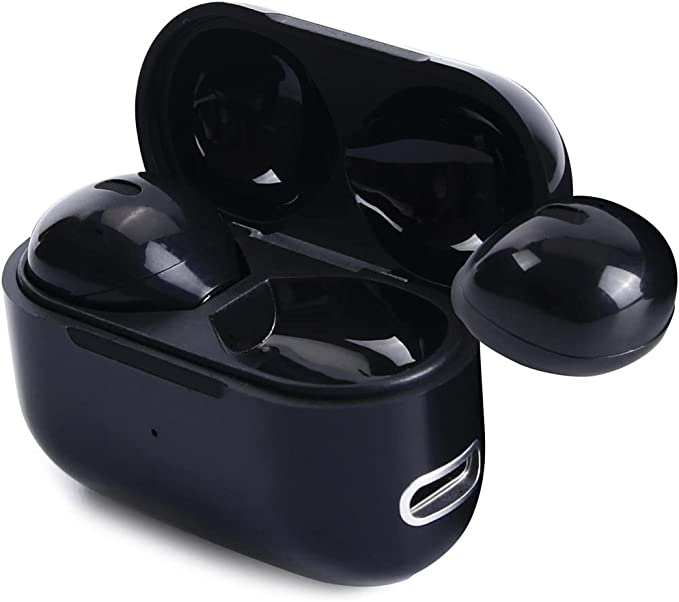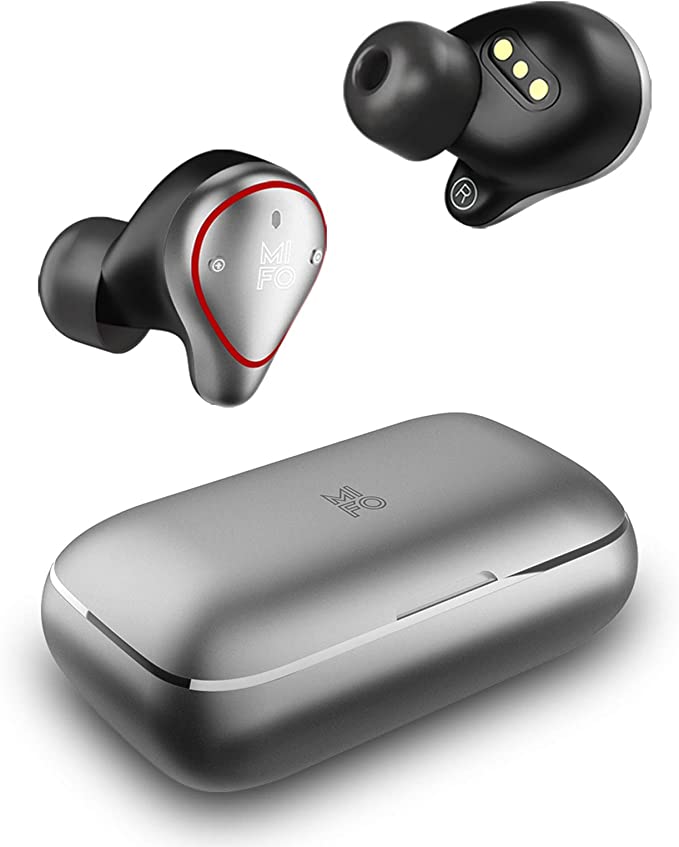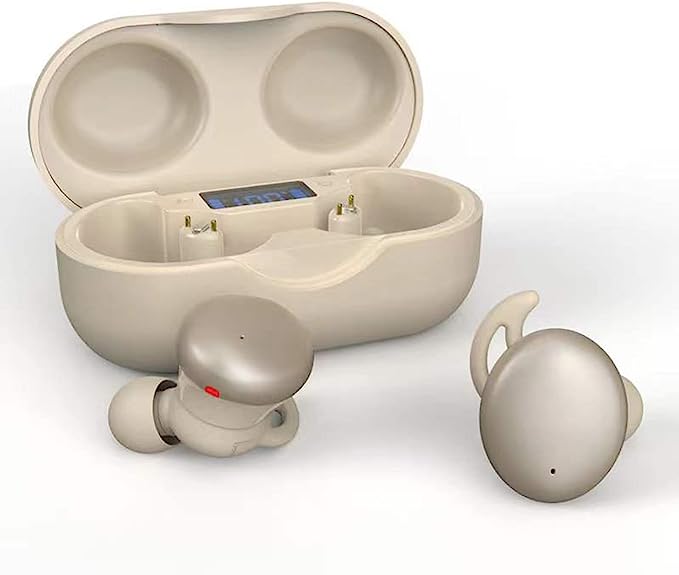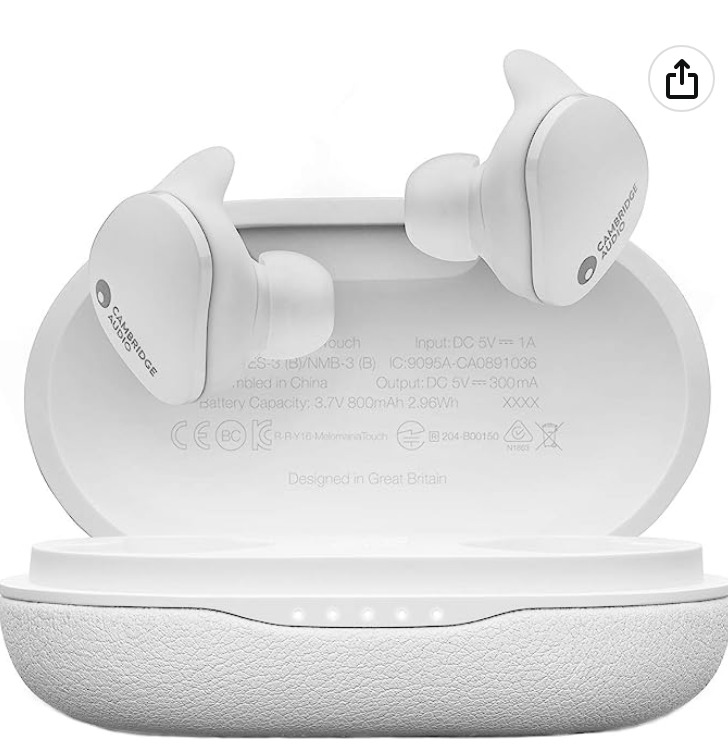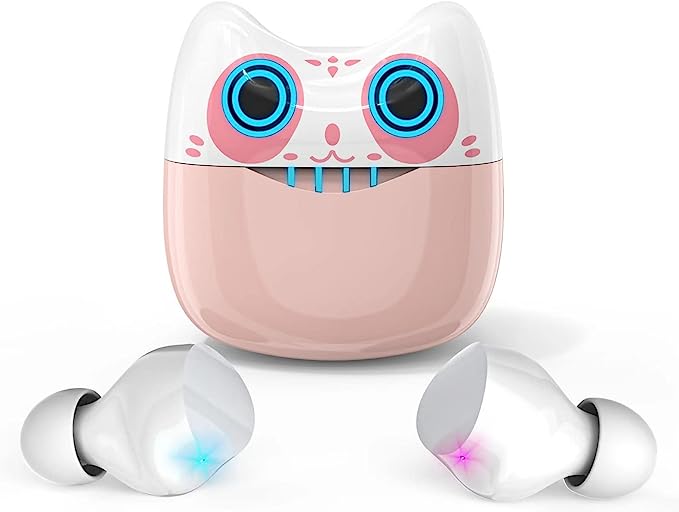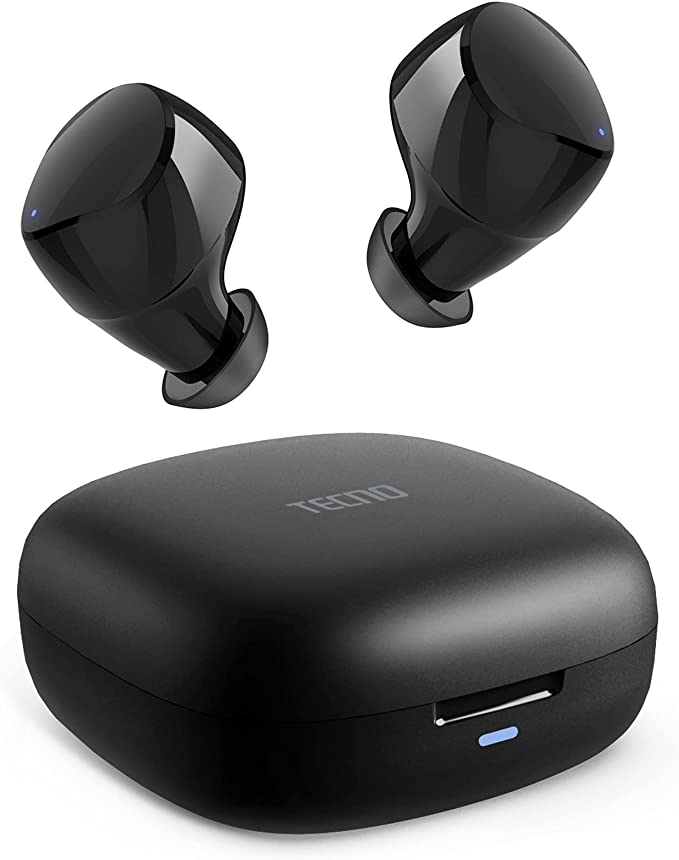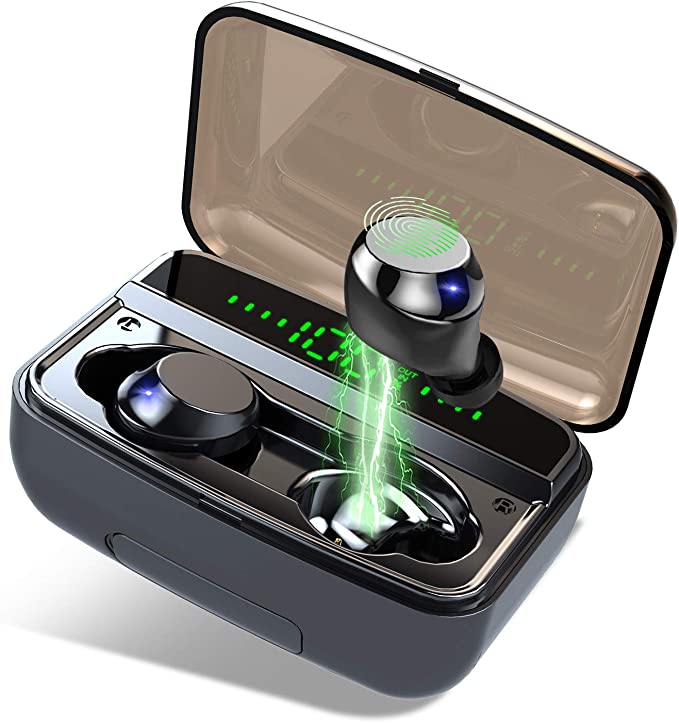eleror X9 Mini Wireless Earbuds: The Science Behind Ultra-Small Earphones for Sleep & Comfort
Update on April 28, 2025, 3:22 p.m.
We’ve all seen them, perhaps even yearned for them: those impossibly small wireless earbuds promising a world of untethered audio, almost invisible yet ever-present. The dream is compelling – imagine earbuds so tiny and comfortable you could forget they’re there, perfect for drifting off to sleep listening to a podcast, focusing during a workout without bulky gear, or subtly enjoying music throughout your day.
But reality often bites. The search for the perfect tiny earbud can feel like a frustrating quest. Many are uncomfortable, pressing awkwardly against the delicate structures of our ears. Others deliver disappointingly tinny sound, fall out at the slightest movement, or feature controls seemingly designed for elfin fingers.
This brings us to products like the eleror X9 Mini Wireless Earbuds. Based on the information once available on its retail page, this particular model aimed squarely at that dream niche – marketed for sleep, workouts, and travel, emphasizing its “ultra-small size” and “comfort.” However, the narrative presented by user experiences tells a more complex story, reflected in a modest 3.1 out of 5-star rating from 52 users before it became unavailable.
Instead of simply reviewing a product that’s no longer on the shelves, let’s use the eleror X9 as a fascinating case study. What can its design aspirations, claimed features, and reported user outcomes teach us about the intricate science and engineering challenges inherent in creating truly miniature audio devices? What trade-offs are engineers forced to make when shrinking technology down to the size of a bean? Let’s dive in.

The Ergonomic Tightrope: Can Ultra-Small Mean Ultra-Comfortable?
The first hurdle for any earbud, especially a tiny one meant for extended wear or even sleep, is comfort. Our ears are incredibly intricate and sensitive structures, unique as fingerprints. Pressure points, particularly in the concha (the main bowl of the outer ear) and along the antihelix ridge, can quickly lead to soreness if an earbud doesn’t fit just right.
The eleror X9 reportedly tackled this challenge head-on, claiming an “ultra-small size” and a remarkably low weight of just 2.7 grams per earbud. From a physics perspective (Pressure = Force / Area), reducing mass directly reduces the downward force, potentially lessening pressure. The manufacturer also claimed an “ergonomic shape” designed to conform to the ear’s curves and included “Flexible, Secure-fit Wingtips” in multiple sizes (M/L mentioned).
How should this work? The idea behind wingtips, those little silicone fins, is clever. They’re meant to tuck under the antihelix ridge, acting like tiny anchors. This serves two purposes: stability (preventing the earbud from slipping out during movement) and pressure distribution (spreading the load across a wider area instead of concentrating it). Think of it like the difference between balancing on your tiptoes versus standing flat-footed – distributing the weight makes it more comfortable. Finding the right earbud fit can feel like searching for the perfect pair of shoes; size, shape, and support mechanisms all need to align with your individual anatomy.
The Reality Check: Here’s where the X9 story gets interesting, mirroring a common challenge. While some users, according to the reviews, found them “super comfortable” specifically for sleeping, others reported significant issues: the earbuds falling out easily, or worse, components like the rubber ear tips or the wingtips themselves detaching and even getting stuck in the ear. Why such a discrepancy? It points towards potential issues beyond just the design concept. Factors like manufacturing tolerances (tiny variations making a big difference in fit), the quality and durability of the silicone materials used, and the sheer diversity of human ear shapes likely played significant roles. Achieving consistent comfort and security in a mass-produced, ultra-small device is a formidable ergonomic tightrope walk.

Shrinking the Sound: The Physics of Audio in Miniature
Comfort is crucial, but earbuds exist to deliver sound. And shrinking audio components presents its own set of physical limitations. Sound, fundamentally, is moving air. Inside an earbud, a tiny speaker called a driver does this job. The X9 specified 6mm drivers, a common size for compact earbuds. The driver has a diaphragm – a thin membrane that vibrates rapidly to create sound waves.
The manufacturer claimed these drivers featured “triple-layer composite diaphragms,” aiming for “powerful sound with crisp treble, smooth mids, and deep bass.” What does that mean in theory? Different materials excel at different things acoustically. A composite diaphragm tries to combine materials to achieve a balance – perhaps stiffness for clear high frequencies (treble) and good damping characteristics to control vibrations for cleaner low frequencies (bass).
The Acoustic Compromise: However, basic physics is hard to cheat. Generally, producing deep bass requires moving larger volumes of air, which is easier for larger drivers. Cramming powerful, full-range sound into a tiny 6mm driver is an immense challenge. Furthermore, the final sound quality is heavily dependent on how well the earbud seals within your ear canal. A poor seal allows bass frequencies to leak out, resulting in thin, weak sound. It’s like trying to get resonant bass from a tiny portable speaker versus a large subwoofer – size often matters.
Interpreting the Feedback: This context helps understand the X9’s mixed sound reception (average user rating of 3.5/5). Some found it acceptable “for the price,” while others reported poor quality or, more concerningly, sound degradation over time where the volume became a “whisper” even when maxed out. This could point to the inherent limitations of small drivers, inconsistencies in fit affecting the seal, or potential component quality issues leading to failure.
A Note on Calls: The product specs mention a MEMS Omnidirectional Mic. MEMS (Micro-Electro-Mechanical Systems) technology allows for incredibly small microphones. However, “omnidirectional” means it picks up sound equally from all directions. In a noisy environment, this means it captures not just your voice, but also everything around you, which likely contributes to the user reports of others having a hard time hearing them during calls. Clear call quality often requires more sophisticated multi-microphone arrays and noise-canceling algorithms, features typically found in larger or more premium earbuds.

Wireless Whispers: Decoding Bluetooth 5.0 and Connectivity
The “wireless” in wireless earbuds relies on Bluetooth, a short-range radio technology. The eleror X9 utilized Bluetooth 5.0. Compared to older versions (like 4.x), Bluetooth 5.0 offers the potential for faster data transfer speeds, longer range (less relevant for ear-to-phone distances), and improved power efficiency, which could contribute to the claimed battery life. It also supports the necessary profiles (HSP, HFP, A2DP, AVRCP) for handling calls and stereo music streaming.
However, a stable connection isn’t guaranteed just by the version number. Factors like antenna design within the tiny earbud shell, interference from other devices or even your own body, and the quality of the Bluetooth chip itself all play crucial roles. While the X9 claimed easy “one-step pairing,” and one user review noted it “pairs quickly,” the provided feedback doesn’t give a deep insight into the stability of the connection during use, though major connection-dropping complaints weren’t highlighted in the snippets provided.

Weathering the Wear: What Does IPX5 Actually Protect Against?
Life happens. Sweat during a run, getting caught in a drizzle – earbuds need some resilience. The eleror X9 carried an IPX5 rating. Let’s decode this standard “Ingress Protection” code: * IP: Stands for Ingress Protection. * X: Means the product hasn’t been rated for protection against solid particles (like dust). * 5: This is the liquid protection level. It signifies protection against low-pressure water jets projected by a nozzle (6.3mm) from any direction.
Real-World Meaning: Practically, IPX5 means the earbuds should withstand sweat without issue and survive light rain or accidental splashes. You could rinse them gently under a low-pressure tap (though manufacturers usually advise against it). It does not mean they are waterproof. Submerging them in water, wearing them in the shower, or exposing them to high-pressure water is likely to cause damage. It’s more akin to a water-resistant watch than a diver’s watch. This level of protection seems appropriate and sufficient for the X9’s intended use cases like workouts and travel.
Powering Pixies and Prodding Panels: Battery Life & Touch Controls
Keeping these tiny devices running requires a clever power strategy. Like most True Wireless Stereo (TWS) earbuds, the X9 used a two-part system: the earbuds themselves held a charge (claimed up to 6 hours of listening), and the pocket-sized charging case acted as a portable power bank, providing additional charges (claimed up to 18 more hours, totaling 24 hours). Charging the case via the modern USB-C standard is a convenient plus. The user rating for battery life (3.8/5) was relatively positive compared to other aspects, suggesting the claimed endurance was reasonably met in practice for many.
Interaction is another area where miniaturization poses challenges. The X9 featured touch controls, replacing physical buttons. The goal is usually a sleeker look and avoiding the uncomfortable pressure of pushing a button directly into your ear canal. The claimed functions included play/pause, answering calls, adjusting volume, and skipping tracks via taps.
The Touch Trouble: However, this feature was a significant source of frustration according to user reviews. Users reported difficulty locating the small touch-sensitive area (“Where’s the control buttons are is a mystery”) and frequent accidental activation, especially when adjusting the fit or lying down (“some button is pressed and I get something like…”). This highlights a common pitfall of touch controls on tiny surfaces: they can be finicky, lack tactile feedback, and be prone to unintentional commands. Designing an intuitive and reliable touch interface on such a small device is harder than it looks.

The Sum of Its Parts: Reconciling Design Intent with User Reality
So, we have an earbud that aimed to be ultra-small, comfortable (especially for sleep), decent-sounding, reasonably durable, and easy to use. Yet, the overall user rating sat at a mediocre 3.1 stars before disappearing from sale. What happened?
The story of the eleror X9 seems to be a classic case of ambitious design goals potentially colliding with the harsh realities of budget manufacturing and the inherent challenges of extreme miniaturization. * The Comfort Conundrum: While the idea of small + light + wingtips is sound, achieving a universally comfortable and secure fit across diverse ear shapes with potentially variable manufacturing quality proved elusive for many users. * The Sound Squeeze: The laws of physics place limits on small audio drivers. Delivering “premium sound” from a 6mm driver at a likely budget price point is difficult, and reports of sound degradation suggest potential component quality or longevity issues. * The Interface Issue: Tiny touch controls, while aesthetically clean, often sacrifice usability, leading to user frustration. * The Quality Question: Reports of parts detaching or earbuds failing suggest possible compromises in materials or assembly quality control, perhaps necessary to achieve the target size and price point.
This gap between the marketing promise and the reported user experience isn’t unique to the eleror X9. It’s a frequent narrative in the world of affordable electronics, particularly when pushing the boundaries of form factor. Achieving excellence in acoustics, ergonomics, connectivity, durability, and usability within a tiny, budget-friendly package requires navigating a minefield of engineering trade-offs.
Conclusion: Lessons Learned from the Little Earbud That Couldn’t (Quite)
Our exploration of the eleror X9 Mini Wireless Earbuds wasn’t about praising or condemning a specific product, especially one no longer available. Instead, we used it as a lens to view the fascinating, complex world of miniature audio technology.
We saw how the quest for comfort involves a deep understanding of ergonomics and the challenges of mass-producing for unique anatomies. We touched upon the acoustic physics that make achieving rich sound in tiny spaces difficult, forcing compromises. We decoded wireless standards like Bluetooth 5.0 and durability ratings like IPX5 to understand their practical implications. And we recognized how even seemingly simple features like touch controls become surprisingly complex at miniature scales.
The key takeaway? Evaluating technology, especially compact personal tech, requires looking beyond the bullet points on a spec sheet. It demands an appreciation for the underlying science, the intricate engineering challenges, the inevitable trade-offs engineers must make, and, crucially, the unfiltered reality of user experiences. The eleror X9, with its mix of ambitious goals and reported shortcomings, serves as a potent reminder that the journey towards the perfect, invisible, seamlessly integrated audio companion is ongoing – a continuous balancing act between the desirable and the physically achievable. Understanding this helps us all become more informed consumers, better equipped to decide which features truly matter to us and which compromises we are willing to accept.

